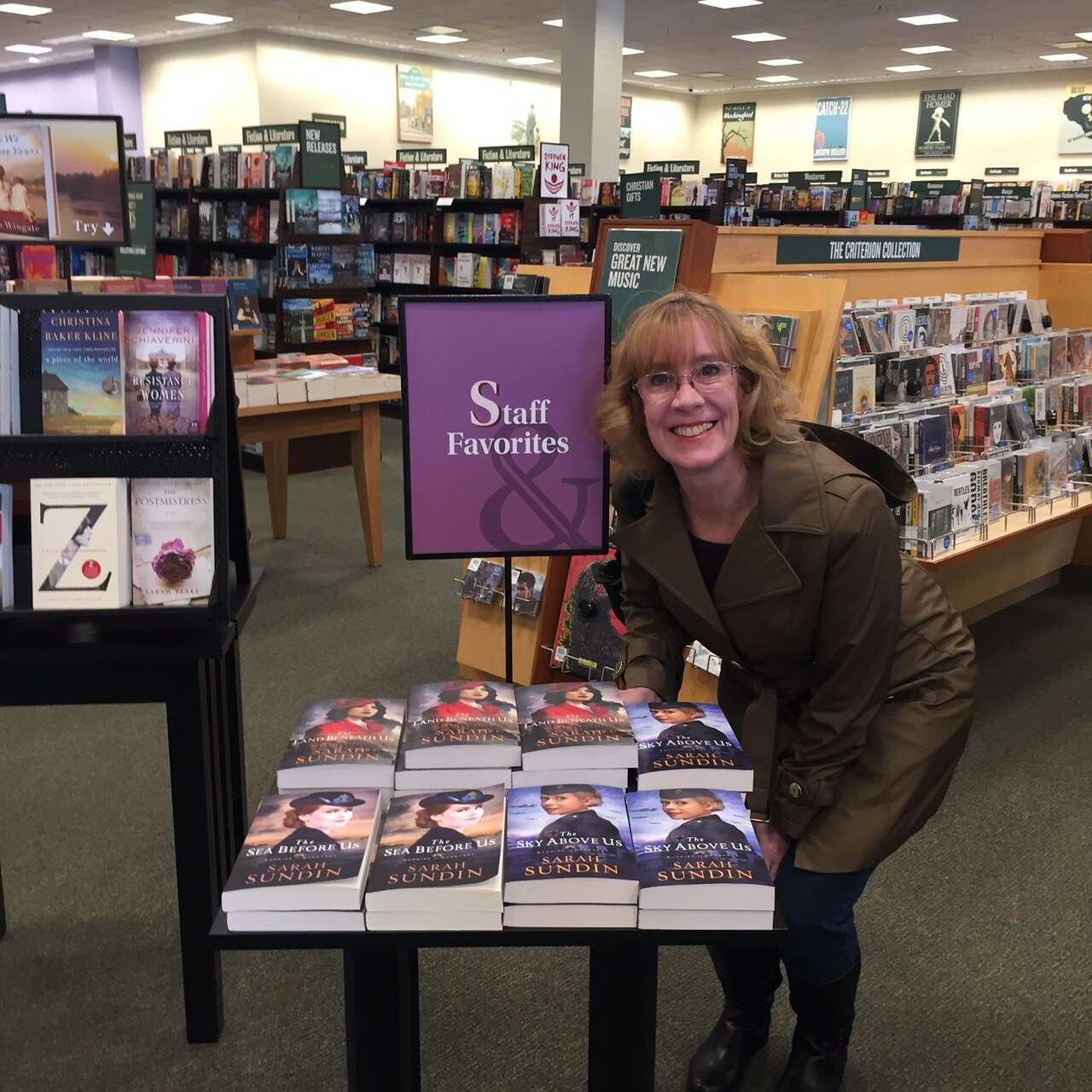We’re excited to introduce you to the always interesting and insightful Sarah Sundin. We hope you’ll enjoy our conversation with Sarah below.
Sarah, thanks for joining us, excited to have you contributing your stories and insights. Can you talk to us about how you learned to do what you do?
When I had my first idea for a novel, I had no training in fiction writing at all. I majored in chemistry and have a doctorate in pharmacy. My writing centered on lab reports and research papers. At first, I just wrote – and finished that first novel. Honestly, if I’d learned about the craft beforehand, it might have paralyzed me. I simply needed to prove to myself that I could write an entire novel.
Then I dedicated myself to learning. I attended my first writers’ conference so I could find out how to get my masterpiece published. I came home with a pile of craft books and the realization that I had a lot of work to do before publication. I rewrote that first novel, then a second. Ten years later, my third novel became my first published work. Ten years of rejection letters, conferences, reading craft books, and writing and rewriting and writing and rewriting.
I can’t emphasize enough the importance of writers’ conferences. Disclaimer – I serve as the co-director of the West Coast Christian Writers Conference. But I do so because I see the incalculable worth of conferences. Not only did I learn about writing craft and the process of publication, but I met editors, agents, and my fellow writers on the journey. Since writing is a solitary profession, that community of writers is essential.
As for speeding up the process, I doubt I could have. Any skill takes time to learn, and writing a novel is a complex skill. Also, I had three young children and a part-time job as a pharmacist, so my writing time was limited. I’m very thankful I didn’t receive my first contract until my children were older and I was able to commit to full-time writing.
The most essential skills for an aspiring writer – other than a deep love of words and story – are teachability and perseverance in tandem. When a writer is teachable but not persistent, she’ll rewrite her first chapter after every bit of feedback and will never finish. When a writer is persistent but not teachable, he’ll resist any input or advice and never progress – and no editor will want to work with him.


Sarah, before we move on to more of these sorts of questions, can you take some time to bring our readers up to speed on you and what you do?
I’m a bestselling and award-winning author of historical fiction set during World War II, including my sixteenth novel, Embers in the London Sky (Revell Books, February 2024). My novels have won the Christy Award and the Carol Award, and have received starred reviews from Booklist, Library Journal, and Publishers Weekly. I enjoy speaking and serve as co-director of the West Coast Christian Writers Conference.


Do you think there is something that non-creatives might struggle to understand about your journey as a creative? Maybe you can shed some light?
Writing is extremely hard work, but it doesn’t look like it. We writers spend a great deal of time staring into space, but that’s when we’re working our hardest, imagining our scenes and dialogue and what makes our characters tick. Interruptions wake us from this “fictional dream,” and it takes time to return to that state. Training family members to understand and respect that process is…tricky.
Also, writers struggle with a problem common to everyone who works from home. People assume that if you’re home, you aren’t actually working and that a flexible schedule provides infinite flexibility. I’ve learned to keep strict work hours. I set my phone focus so I only receive calls and texts from immediate family during those hours. When someone tells me, “Oh, you can do this – serve on every committee/pick up my kids from school because I have a real job/go out to lunch on a whim,” I’ve learned to respond with a firm, “I’m so sorry, but I’m working then.”


How do you keep in touch with clients and foster brand loyalty?
My email newsletter is my primary means of reaching my readers. I offer a lead magnet of a booklet called “Make It Do – The US Home Front in World War II,” which is a compilation of a dozen of my most popular blog posts. I build my list through multi-author giveaways – and I’ve learned these work best when the group is smaller and we write in a similar genre. I have a sign-up form on my website and links to this sign-up form in social media and in my email signature.
Since I have one novel published a year, I’ve found monthly newsletters work best, with occasional extras around book release time or to promote a giveaway or sale. When I send them too frequently, my readers feel spammed, but if I send them too infrequently, they forget they subscribed.
I’m also active on social media and try to connect with my readers there, responding to comments and shares and posts.
My brand took a while to discover. Since my novels are all set in World War II and my readers love my dedication to historical accuracy, I’ve leaned into that. My website includes posts on WWII history that appeal to my readers, and I also have a daily “Today in World War II History” post that I share on social media. I was afraid it would be too nerdy at first, but my readers really enjoy it! My readers receive a historical tidbit and photo each day, which reminds them I’m a WWII novelist without screaming “BUY MY BOOK!”

Contact Info:
- Website: https://www.sarahsundin.com/
- Instagram: https://www.instagram.com/sarahsundinauthor/
- Facebook: https://www.facebook.com/SarahSundinAuthor
- Twitter: https://twitter.com/sarahsundin
Image Credits
All photos my own.


